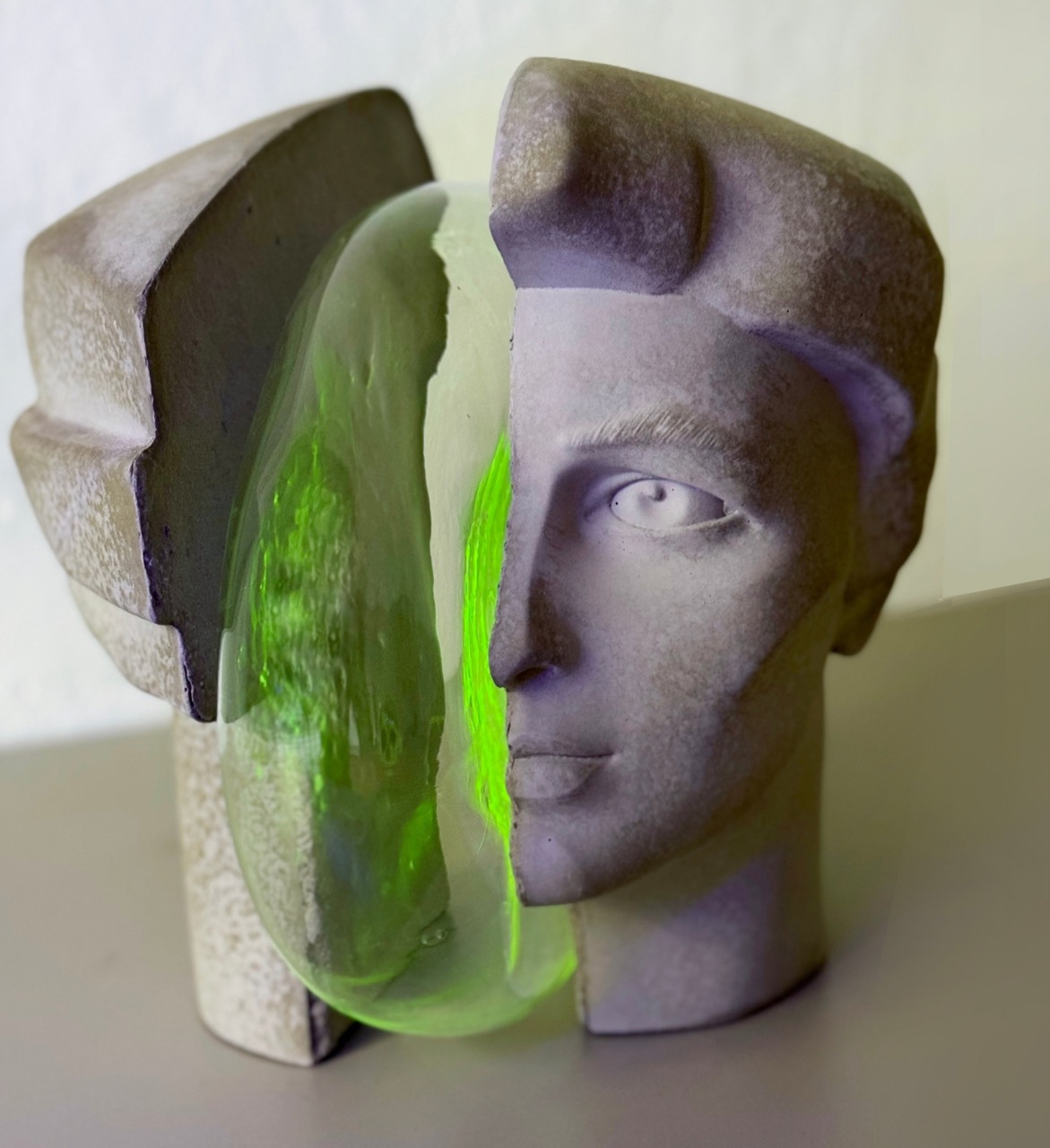



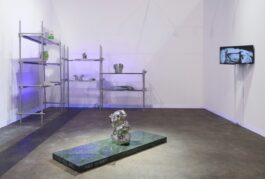
Booth view Catinca Tabacaru Gallery, Art Basel, Hong Kong 2024. Photo: Kitmin Lee Courtesy Catinca Tabacaru Gallery and Art Basel
In When All Is Still Monosov points to the relationship between Soviet monuments and the nexus of nuclear weapons, connecting these systems of control to contemporary warfare. Through opposition, the cement and glass create a visual poem of man-made ideas which could, and did, bring darkness to humanity. Socialist Realism played a role in shaping public perception within the Soviet Union, producing official accounts starkly different from the lived experiences of those affected. Today, the role of nuclear weapons as potential catalyst for unprecedented devastation looms large, adding an extra layer of urgency to these artistic narratives.
The accompanying two-channel video work fast forwards us into a post-nuclear future. A character plays the artist, the creator, who tirelessly carries the heavy cement sculptures, but breaks them at will, stepping out of the suspended disbelief demanded by these objects. She breaks them for artistic freedom, which was, and today still is, robbed from artists by oppressive governments. She breaks the whitewashed representation of a much darker reality. While this rebellion is taking place, on a second screen, where the objects lie broken and still, they offer a backdrop, a landscape, for the endurance of one of the few creatures which could survive a nuclear disaster.
The production of uranium glass, a unique radioactive material, was stopped once the Manhattan Project was underway. Although it is safe to handle and live with, its characteristic green glow is reminiscent of an ominous reality. The lingering specter of fear built by the proliferation of nuclear arsenals during the Cold War is imprinted on the collective consciousness and perpetuates a cycle of conflict and control that distorts our perception of power and security - an influence that continues to shape people's decisions, opinions and voting behavior decades after its fall.
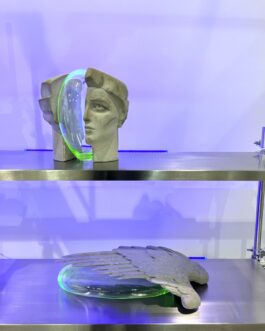
When All Is Still, 2024. (Detail), cement, uranium glass. 28 x 29 x 27 cm (Top) 13 x 61 x 33 cm (Bottom) Photo: Raphael Guilbert
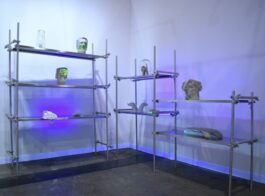
Booth view Catinca Tabacaru Gallery, Art Basel, Hong Kong 2024. Photo: Kitmin Lee Courtesy Catinca Tabacaru Gallery and Art Basel
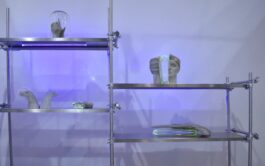
When All Is Still, 2024. (Detail), cement, uranium glass. Photo: Raphael Guilbert
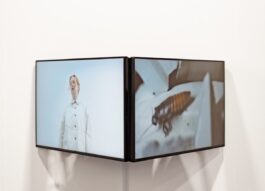
Booth view Catinca Tabacaru Gallery, Art Basel, Hong Kong 2024, When All Is Still, 2024 two-channel video, HD, 07:39 min. Photo: Andrew Crow
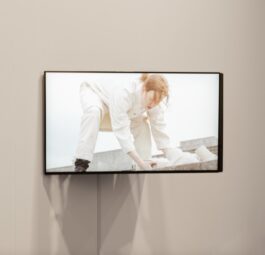
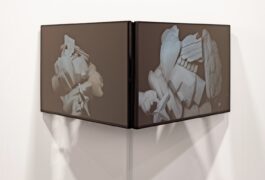
When All Is Still, 2024 two-channel video, HD, 07:39 min. Photo: Andrew Crow
When All Is Still, 2024 two-channel video, HD, 07:39 min. Photo: Andrew Crow
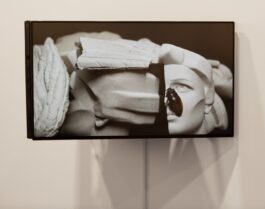
When All Is Still, 2024 two-channel video, HD, 07:39 min. Photo: Andrew Crow
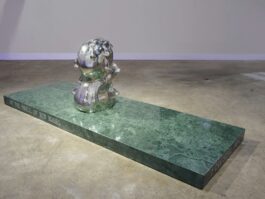
ALMOST REPLACED BY THE SMELL OF RED ROSES, I CAN STILL SMELL WHAT IS BURNT, 2024 Nickel-plated brass, Green Marble 48 x 32 x 30 cm + 60 X 170 X 7 cm. Photo: Kitmin Lee
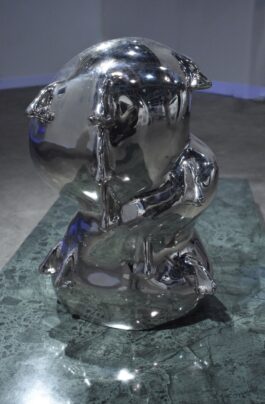
ALMOST REPLACED BY THE SMELL OF RED ROSES, I CAN STILL SMELL WHAT IS BURNT, 2024 Nickel-plated brass 48 x 32 x 30 cm. Photo: Raphael Guilbert
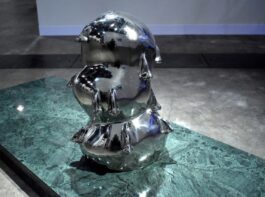
ALMOST REPLACED BY THE SMELL OF RED ROSES, I CAN STILL SMELL WHAT IS BURNT, 2024 Nickel-plated brass 48 x 32 x 30 cm. Photo: Raphael Guilbert

Booth view Catinca Tabacaru Gallery, Art Basel, Hong Kong 2024. Photo: Kitmin Lee Courtesy Catinca Tabacaru Gallery and Art Basel
In When All Is Still Monosov points to the relationship between Soviet monuments and the nexus of nuclear weapons, connecting these systems of control to contemporary warfare. Through opposition, the cement and glass create a visual poem of man-made ideas which could, and did, bring darkness to humanity. Socialist Realism played a role in shaping public perception within the Soviet Union, producing official accounts starkly different from the lived experiences of those affected. Today, the role of nuclear weapons as potential catalyst for unprecedented devastation looms large, adding an extra layer of urgency to these artistic narratives.
The accompanying two-channel video work fast forwards us into a post-nuclear future. A character plays the artist, the creator, who tirelessly carries the heavy cement sculptures, but breaks them at will, stepping out of the suspended disbelief demanded by these objects. She breaks them for artistic freedom, which was, and today still is, robbed from artists by oppressive governments. She breaks the whitewashed representation of a much darker reality. While this rebellion is taking place, on a second screen, where the objects lie broken and still, they offer a backdrop, a landscape, for the endurance of one of the few creatures which could survive a nuclear disaster.
The production of uranium glass, a unique radioactive material, was stopped once the Manhattan Project was underway. Although it is safe to handle and live with, its characteristic green glow is reminiscent of an ominous reality. The lingering specter of fear built by the proliferation of nuclear arsenals during the Cold War is imprinted on the collective consciousness and perpetuates a cycle of conflict and control that distorts our perception of power and security - an influence that continues to shape people's decisions, opinions and voting behavior decades after its fall.



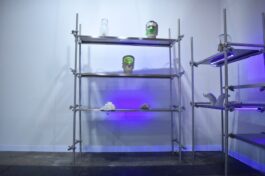
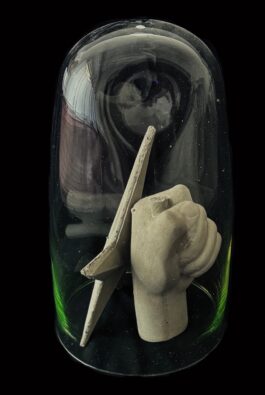

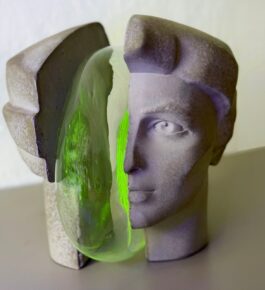

When All Is Still, 2024 two-channel video, HD, 07:39 min

ALMOST REPLACED BY THE SMELL OF RED ROSES I STILL SMELL WHAT IS BURNT, 2024 Nickel-plated brass, Green Marble 48 x 32 x 30 cm + 60 X 170 X 7 cm

